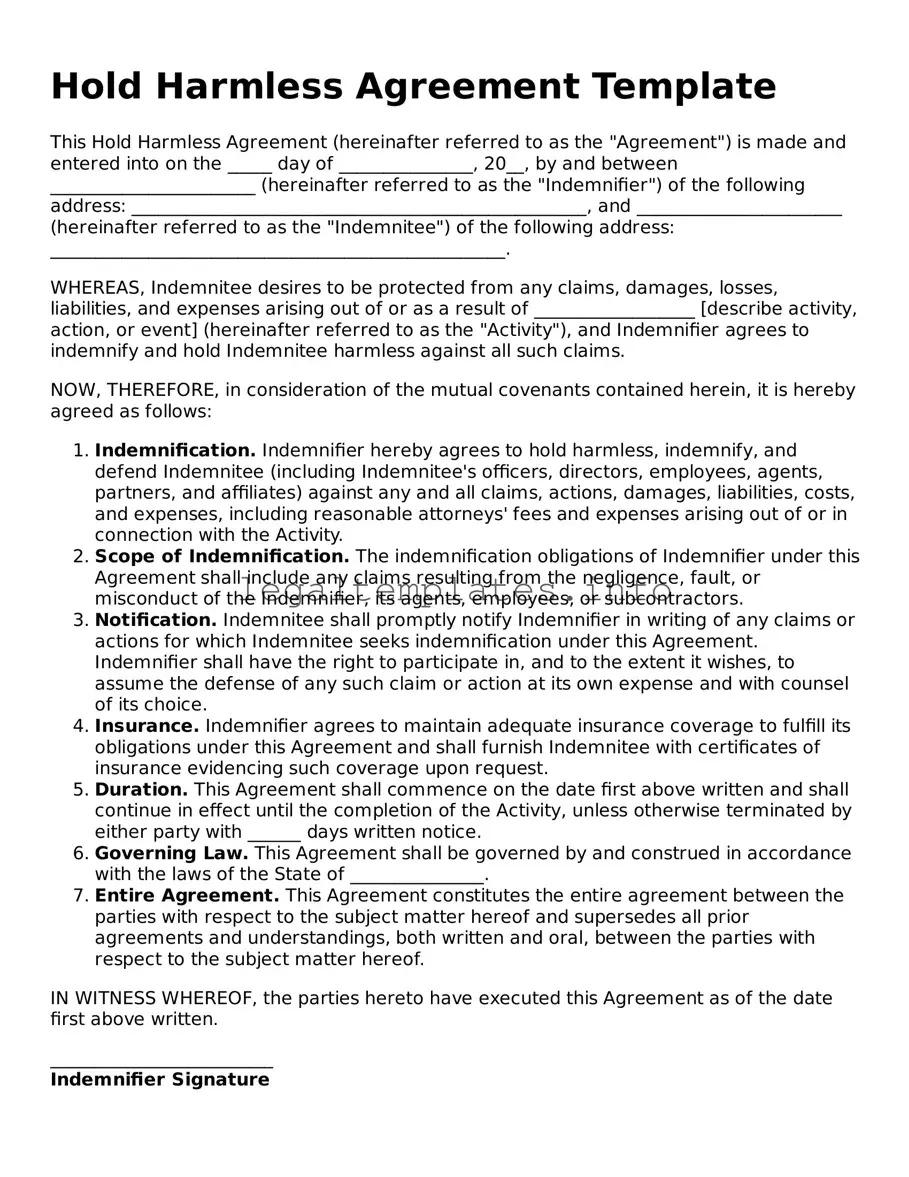What is a Hold Harmless Agreement?
A Hold Harmless Agreement, often referred to as an indemnity agreement, is a legal document between two parties where one agrees not to hold the other liable for any injuries, damages, or losses that may occur from a specific activity. It's a way to protect oneself or one's business by transferring the risk to another party.
When should I use a Hold Harmless Agreement?
You should consider using a Hold Harmless Agreement whenever you're involved in an activity that carries a risk of potential legal issues for the party providing a service, facility, or event. Common scenarios include construction projects, special events, or any activities where participants might be exposed to hazards.
Who needs to sign a Hold Harmless Agreement?
Both parties involved—the one seeking protection (indemnitee) and the one agreeing to provide protection (indemnitor)—need to sign the agreement to make it legally binding. In some cases, witnesses or a notary public may also be required to ensure the document's enforceability.
Is a Hold Harmless Agreement legally binding in all states?
While Hold Harmless Agreements are recognized in most states, the enforceability of these agreements can vary due to differing state laws and regulations. Some states have specific restrictions on the use of these agreements, especially in consumer contracts or employment-related activities. Always check your state's requirements.
Can I write a Hold Harmless Agreement myself?
Yes, you can draft a Hold Harmless Agreement yourself; however, it's crucial to ensure that the document meets legal standards and is clear about the rights and obligations of both parties. For complex situations or significant risks, consulting with a legal professional is recommended to ensure that the agreement is valid and enforceable.
What should be included in a Hold Harmless Agreement?
A comprehensive Hold Harmless Agreement should include the names and addresses of all parties involved, a description of the activity being covered, the duration of the agreement, and specific terms regarding the indemnification. Clarity about the scope of the indemnity (what risks are covered and any limitations) is essential, as well as any relevant state laws or provisions.
Can a Hold Harmless Agreement be revoked?
Yes, a Hold Harmless Agreement can be revoked, but typically this requires the consent of both parties involved in the agreement. The agreement itself may also outline specific circumstances under which it can be terminated. It's advisable to include a termination clause when drafting the document.
What happens if a dispute arises under a Hold Harmless Agreement?
If a dispute arises, it will initially be addressed according to the terms specified in the agreement, including any arbitration or mediation clauses. If the disagreement cannot be resolved through these means, the matter may proceed to court. The enforceability of the agreement will be scrutinized, and legal advice may become necessary to navigate the dispute.
